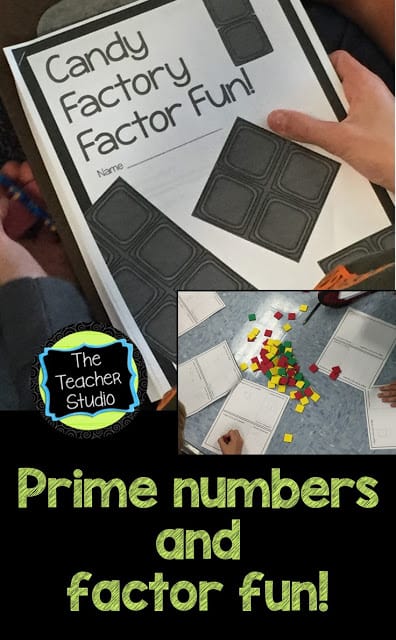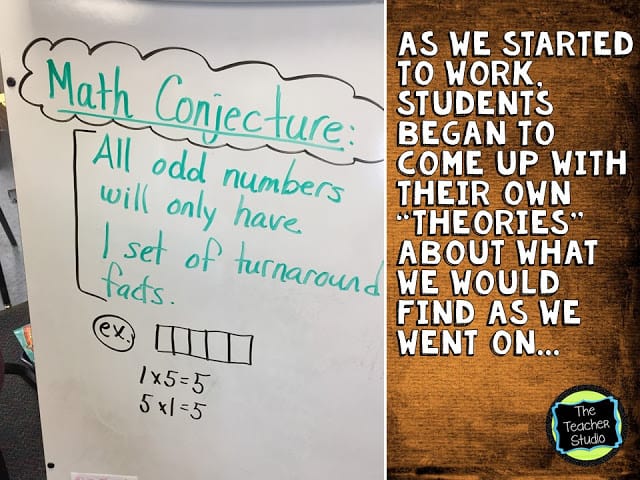One thing that is a HUGE part of our curriculum in fourth grade involves multiplication concepts–facts, large number multiplication, measurement conversions, patterns, and more.
Although my students had a LOT of exposure to multiplication concepts and facts in third grade, every year I feel it is worth my time to go back and make sure we are clear on a few things–like the commutative property of multiplication, different strategies, and the use of arrays to represent multiplication facts. All of these are key foundation concepts as we move into bigger and better things down the road. A few years ago I started using really using a more constructivist approach to multiplication facts–I wanted my students to DISCOVER patterns in multiplication, not be TOLD.
I came up with the idea of arranging candies in a rectangular box as a way for students to think about the different ways numbers could be broken into arrays. I gave them ample time to experiment with foam “candies” (paper squares would work just fine) and try to find all the ways that one candy, two candies, three candies–all the way up to 24 candies–could fit in a box. The results were fascinating!
As I walked around I started to notice that students needed coaching on some of the basics–from writing number sentences correctly to representing arrays with matching number sentences. We had a great discussion about turnaround facts–is 5 x 1 the same as 1 x 5? (My answer may be different than yours–my answer is NO. The ANSWER is the same–but 1 group of 5 candies is NOT the same as 5 groups of 1 candy. 3 cages of two kittens is NOT the same as 2 cages with 3 kittens. This is an important discussion to have.)
Another GREAT part of this lesson was the collaboration component. Students were having fantastic math discussions about what they were doing, why it worked, and so on. This became especially important later on as I started to ask them some questions to push them. Many groups were speeding through the process and were “missing” facts…they did the 1 x 12 = 12 and 12 x 1 = 12 but failed to find 2 x 6, 6, x 2, and 3 x 4 and 4 x 3. When I started to ask questions like, “Would a candy company really want to have a long skinny package of candies on the shelf? What about a 24 pack? Is their best option a 1 x 24 box?” This REALLY got students talking and they frantically began to revisit their work.

As they were working, a few students started to make some predictions–which we coined “conjectures” as they attempted to make sense of what they were doing. One pair came up with this conjecture as they started to notice that odd numbers seemed to only have one combination. We shared the conjecture and students were eager to accept it. I challenged them to try to DISPROVE it as they worked–and after a while, the same pair that made the conjecture, admitted that it was faulty.
All in all, it was a great warm up for our unit on facts, prime numbers, and composite numbers–and after they finish working on their combinations, we will later go back and define what a “prime” number is…and then look for all the prime numbers in our candy project.
Want to see more about what we did? Here is the resource I used to teach the lesson.
And after we are clear on what prime and composite numbers are–we will tackle this concept sort!
Have a great week!











